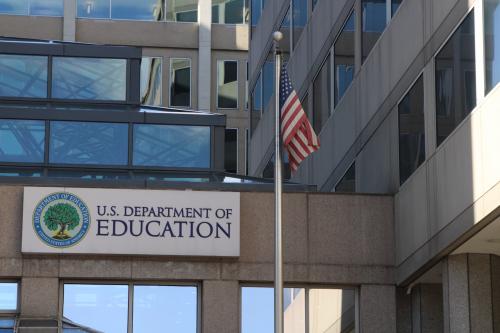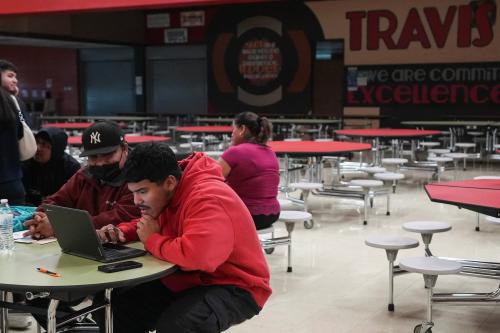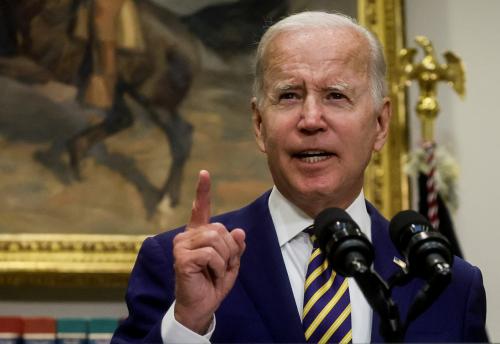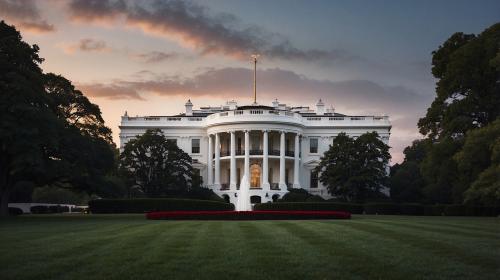College affordability has emerged as one of the central issues in the upcoming presidential election for certain voters—especially younger voters—with student loans receiving particular attention. Many of those voters have called for the president to address college affordability. The truth, though, is that the only systematic way of reducing the price for colleges and universities across the country is for the U.S. Congress and individual states to take action. The executive branch was never meant to be the law-making body of the federal government.
That’s not to say that the legislative branch is providing especially clear direction right now. Congress has produced competing plans that differ substantially from each other with no clear pathway to consensus. Meanwhile, states— even those with billion-dollar surpluses—are cutting funding to public higher education, indicating the branches with the authority to make college affordable are unlikely to do so anytime soon. In a recent interview with NPR, Secretary Cardona argued that the government must do more than simply cancel student loan debt. He’s right! But, without Congress and the states getting involved, there is no clear long-term pathway to real, lasting change.
Two college affordability efforts highlight the limits of executive action
In many ways, this year’s presidential election is starting to feel like a repeat of 2020. In that election, candidate Biden tweeted, “we should forgive a minimum of $10,000/person of federal student loans.” After several years of delay, the Biden administration proposed a debt cancellation plan that would eliminate up to $10,000 of debt for all borrowers of qualifying student loans, and an additional $10,000 for borrowers who had received a Pell Grant while students. The Supreme Court’s decision to strike down the Biden-Harris debt cancellation plan has led the administration to push forward with other plans to revamp student loan repayment. These efforts include creating the Save on a Valuable Education (SAVE) plan, an updated Income-Driven Repayment plan that protects more income for borrowers and reduces the time to debt cancellation. The efforts also include pursuing broader debt cancellation through the negotiated rulemaking process. These policy decisions have already led to the Biden Administration cancelling nearly $140 billion in student loans for almost 4 million borrowers.
While this has been happening, the rollout of the new Free Application for Federal Student Aid (FAFSA), the primary application for all federal student aid (and frequently required for state and institutional aid), has hit several major hurdles. This year’s FAFSA was substantially revised based on the FAFSA Simplification Act, which was enacted as part of the 2021 Consolidated Appropriations Act. Partially due to these revisions, the U.S. Department of Education (ED) launched the updated FAFSA later than usual (December versus October in previous years). That delay alone would have been challenging, but there were errors in the formulas that calculate how much students and their families can contribute to funding their education. The corrections required to fix those errors led to delays in when ED could share students’ application data with colleges and universities. Both issues have affected students’ financial aid applications and financial aid packaging timelines. Using current and historical data, I estimate that ED has received approximately 73% of FAFSA applications that students submitted by the same time last year.1 ED recently began sending the updated data to colleges and universities, though these compounding delays and the discovery of additional errors have made a significant share of institutions push back admission decision and deposit deadlines.
These two issues may seem separate, but they’re linked by the abdication of responsibility that Congress and the states have shown for college affordability. The executive branch is using regulatory action and existing legislation to cancel student loans because Congress has failed to pass any legislation alleviating the burden of student loans on borrowers—and because states have done so little to keep the cost of college manageable for students and their families.
Perhaps Congress deserves some credit for passing the law that created the new FAFSA, which really should simplify the information request from students. But it was also Congress that flat-funded the Office of Federal Student Aid (FSA) in December 2022, the office within ED responsible for executing the updates to the form and monitoring the progress of the contractors responsible for FAFSA implementation. (In real dollars, FSA funding has decreased every year since 2021.) That same office has additional responsibilities, such as restarting payment collections on student loans after the pandemic-induced pause and finalizing the decades-long process of creating new loan servicing contracts to make a more streamlined experience for borrowers. By flat-funding FSA, which had requested an increase roughly equivalent to a third of their budget, it was almost inevitable that the issues with the FAFSA that we see now would crop up. That does not excuse the cascading implementation issues ED has had with the FAFSA. But it certainly hindered the ability of the agency to properly plan and execute with so many responsibilities and no commensurate resource capacity.
Congress and state legislatures can act on college affordability
All these issues point to a Congress and, to an extent, state legislatures that seem disinterested in their role in creating more affordable pathways to and through college. At bare minimum, Congress should adequately fund FSA for the scope of their responsibilities.
Given the improbability that fruitful policy will come from the current Congress, states can take steps in the interim to move towards more affordable pathways to college. States should invest in reducing the price of college while also ensuring that the quality of instruction does not decrease. As one example, Minnesota moved to reduce the price of tuition through tuition freezes and the introduction of a promise program that guarantees no tuition for students with family incomes below $80,000—while providing additional funding to public institutions to offset the loss in tuition revenue. Pairing tuition reduction with increased funding is critical given that a college education is subsidized (tuition does not cover all the expenses of educating a student). Without the additional funding, institutions in the United States would face the issues seen by institutions in the UK, where reduced tuition revenues were not paired with additional funding, leading to precipitous drops in education quality.
The lack of legislative progress leaves us with the proposals put forward by the executive branch, which are insufficient to provide college affordability for new students. For example, in that NPR interview last month, Secretary Cardona argued that cancelling portions of student loan debt is not a “moral hazard” that will wind up increasing college prices, because the administration is also working to hold institutions accountable for their return-on-investment (ROI). It’s a bit more complicated than that. The steps that Secretary Cardona mentioned in the interview, including creating a list of institutions with low ROI, seem unlikely to reduce the cost of tuition. My research focused on the precursor to those lists found no evidence that lists “shaming” colleges for high tuition and net price had any consistent impact on pricing or students’ enrollment decisions. These findings are consistent with a larger body of evidence that providing information usually isn’t enough to get better outcomes.
The executive branch has the responsibility to ensure proper implementation of policies, which led to improvements like the SAVE Plan. Still, without Congress and the states actively engaging in a wholescale reevaluation of college affordability, it is nearly impossible for structural, lasting change to occur. The status quo leaves us with a reliance on students and families funding college—a doubling down on the individual returns to college, with too little recognition of the broader public benefits of postsecondary education (e.g., community college programs for wind turbine technicians and nurses who undoubtedly contribute to the public good). Our society benefits greatly from having a robust—and affordable—higher education system. Our investments should reflect that.
-
Footnotes
- For the current application cycle, FSA reported that 6.7 million FAFSA applications had been submitted as of April 2, 2024 (and 6.6 million had been processed). For the prior academic year (application cycle for 2023-2024), historical records show that 9.2 million applications had been submitted by the end of the second quarter (from October 1, 2022, to March 31, 2023).







Commentary
Long-term solutions for college affordability require congressional and state action
April 9, 2024